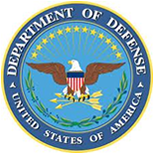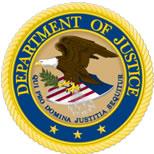Background and Authorities
In the aftermath of the September 11 terrorist attacks, our nation began a historic transformation aimed at preventing future attacks and improving our ability to protect and defend our people and institutions at home and abroad. As a result, we are now better informed of terrorist intentions and plans and better prepared to detect, prevent, and respond to their actions. Improved intelligence collection and analysis have helped paint a more complete picture of the threat, while enhanced information sharing has provided us a greater capacity for coordinated and integrated action.
Significant laws have been enacted in the past 6 years which have enhanced our information sharing capabilities.
- Uniting and Strengthening America by Providing Appropriate Tools Required to Intercept and Obstruct Terrorism (USA PATRIOT) Act of 2001 removed barriers that once restricted the sharing of information between the law enforcement and intelligence communities, while at the same time protecting our fundamental liberties.
- The Homeland Security Act of 2002 established the Department of Homeland Security (DHS) in part to improve the sharing of information among Federal, State, and local government agencies and the private sector, in order to enhance our Nation's ability to detect, identify, understand, and assess terrorist threats to and vulnerabilities of the homeland, to better protect our Nation's critical infrastructure, integrate our emergency response networks, and link State and Federal Governments. Additionally, on July 29, 2003, the President issued EO 13311, addressing key information sharing provisions in the Homeland Security Act.
- The Intelligence Reform and Terrorism Prevention Act of 2004 (IRTPA) reorganized the Intelligence Community and established the position of Director of National Intelligence to serve as the President's chief intelligence advisor and the head of the Intelligence Community, and to ensure closer coordination and integration of the 16 agencies that make up the Intelligence Community.
- IRTPA also established the National Counterterrorism Center (NCTC) to serve as a multiagency center analyzing and integrating all intelligence pertaining to terrorism, including threats to U.S. interests at home and abroad.
Building upon these organizational and institutional changes strengthen information sharing. The following actions specifically relate to the establishment of the Information Sharing Environment:
- In his immediate response to the Recommendations of the 9/11 Commission, the President issued Executive Order 13356, Strengthening the Sharing of Terrorism Information to Protect Americans, August 27, 2004. In it the President directed agencies to give the "highest priority" to the prevention of terrorism and the "interchange of terrorism information [both] among agencies" and "between agencies and appropriate authorities of States and local governments." The President further directed that this improved information sharing be accomplished in ways that "protect the freedom, information privacy, and other legal rights of Americans."
- Section 1016 of the Intelligence Reform and Terrorism Prevention Act of 2004 , embraced the key principles of EO 13356 and directed the establishment of the Information Sharing Environment.
- The President was charged to create the ISE, designate its organization and management structure, and determine and enforce the policies and rules to govern the ISE's content and usage. The law further required the ISE be "a decentralized, distributed, and coordinated environment" that "to the greatest extent practicable, ... connects existing systems ... ; builds upon existing systems capabilities currently in use across the Government; ... facilitates the sharing of information at and across all levels of security; ... and incorporates protections for individuals' privacy and civil liberties."
- In addition, the law required the President designate a Program Manager for the ISE. The role of the Program Manager is to manage the ISE, oversee its implementation, assist in the development of ISE standards and practices, and monitor and assess its implementation by federal departments and agencies.
- The law also established an Information Sharing Council to advise the President and the Program Manager on the development of ISE policies, procedures, guidelines, and standards, and to ensure proper coordination among federal departments and agencies participating in the ISE. Under the Obama Administration, the Information Sharing Council has been integrated into the White House policy process through the Information Sharing and Access Interagency Policy Committee (IPC), so that the important work of the ISC will move forward under the auspices of the Executive Office of the President
- On October 25, 2005, the President issued EO 13388, Further Strengthening the Sharing of Terrorism Information to Protect Americans, superseding Executive Order 13356, to facilitate the work of the Program Manager, expedite the establishment of the ISE, and restructure the Information Sharing Council.
- On December 16, 2005, in accordance with section 1016 of the Intelligence Reform and Terrorism Prevention Act of 2004, the President issued a Memorandum to Heads of Executive Departments and Agencies prescribing the guidelines and requirements in support of the creation and implementation of the ISE. The Memorandum contained two requirements and five guidelines which prioritize efforts the President believes are most critical to the development of the ISE and assigned Cabinet officials responsibility for resolving some of the more complicated issues associated with information sharing.
- The President directed that the ISE be established by building upon "existing Federal Government policies, standards, procedures, programs, systems, and architectures (collectively "resources") used for the sharing and integration of and access to terrorism-related information, and ... leverage those resources to the maximum extent practicable, with the objective of establishing a decentralized, comprehensive, and coordinated environment for the sharing and integration of such information."
- He also directed the heads of executive departments and agencies to "actively work to create a culture of information sharing within their respective departments or agencies by assigning personnel and dedicating resources to terrorism-related information sharing, by reducing disincentives to such sharing, and by holding their senior managers accountable for improved and increased sharing of such information."
- The five specific guidelines were designed to advance the development and implementation of the ISE.
- Guideline One: The President directed that common standards be developed "to maximize the acquisition, access, retention, production, use, management, and sharing of terrorism information within the ISE, consistent with the protection of intelligence, law enforcement, protective, and military sources, methods, and activities." These common standards, the President further directed, must accommodate and account for the need to improve upon the sharing of terrorism-related information with State, local, and tribal governments and the private sector.
- Guideline Two: The President stressed that "war on terror must be a national effort" and therefore one in which State, local, and tribal governments and the private sector are afforded appropriate opportunities to participate as full partners in the ISE. Accordingly, he directed that a common framework be developed governing the roles and responsibilities of federal departments and agencies relating to the sharing of terrorism information, homeland security information, and law enforcement information among federal departments and agencies, State, local, and tribal governments, and private sector entities.
- Guideline Three: The President directed a series of actions be undertaken to improve upon the sharing of Sensitive but Unclassified (SBU) information. Specifically, he directed the heads of particular departments and agencies to submit recommendations for the standardization of SBU procedures for marking and handling terrorism information, homeland security information, and law enforcement information, and eventually all other types of information shared within the ISE.
- Guideline Four: The President recognized the imperative for the ISE to facilitate and support the appropriate exchange of terrorism information with our foreign partners and allies and, toward that end, directed the development of recommendations to achieve improved sharing in this area.
- Guideline Five: The President directed, as he did earlier in Executive Order 13353, that the information privacy rights and other legal rights of Americans must be protected. Accordingly, he required guidelines be developed and submitted for approval to ensure such rights are protected in the implementation and operation of the ISE.
- On November 16, 2006, pursuant to the President's delegation of authority, the Director of National Intelligence submitted to the Congress a report containing the Implementation Plan for the Information Sharing Environment. The ISE Implementation Plan, among other things, delineates how the President's guidelines and requirements will be implemented by drawing upon recommendations developed pursuant to those guidelines. The plan contains descriptions of the functions, capabilities, resources, and conceptual design of the ISE, a plan for deploying and operating the ISE, and a process for measuring implementation progress and performance. The plan was developed through a collaborative effort among the Program Manager and the ISE member organizations. It also incorporates the perspectives of representatives from State, local, and tribal governments who reviewed the ISE Implementation Plan Report during its development. Since the Plan's submission to the Congress, many of its action items have been implemented.
- In August of 2007, the Implementing Recommendations of the 9/11 Commission Act of 2007 , included amendments to section 1016 of the Intelligence Reform and Terrorism Prevention Act of 2004 and to the Homeland Security Act of 2002. The new law expands the scope of the ISE to explicitly include homeland security information and weapons of mass destruction information. It also endorses and formalizes many of the recommendations developed in response to the President's information sharing guidelines, such as the creation of the Interagency Threat Assessment and Coordination Group, and the development of a national network of State and major urban area fusion centers.
- On October 31, 2007, President Bush issued the first National Strategy for Information Sharing to prioritize and unify our Nation's efforts to advance the sharing of terrorism-related information. The Strategy integrates ISE-related initiatives and sets forth the Nation's plan to build upon progress made in improving information sharing since the September 11 attacks to establish an integrated National information sharing capability.
- The Strategy was developed using a collaborative process and based on significant input provided by the federal Information Sharing Council and State, local, tribal, and private sector officials from across the nation.
- The Strategy helps to ensure those responsible for combating terrorism and protecting our local communities have access to the timely and accurate information they need by:
- Providing a framework for enhanced information sharing among federal, state, local, and tribal officials, the private sector, and foreign partners to aid their individual missions and to help secure the homeland.
- Describing the Federal Government's approach to support State and major urban area fusion centers, as well as National efforts to fight crime and make our local communities safer.
- Recognizing that as information sharing capabilities are enhanced, it is imperative that the legal rights of Americans continue to be protected, especially in the area of privacy and civil liberties.












